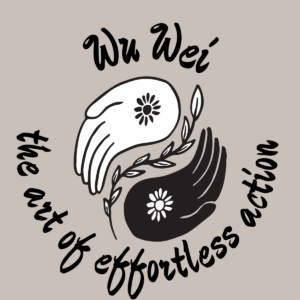Have you ever wondered about the difference between thankful and grateful? At first glance, these words might seem like synonyms, two sides of the same coin, interchangeable in everyday conversation. But beneath the surface, there is a world of depth and meaning that sets them apart, influencing how we experience life, how we connect with others, and how we grow within ourselves.
Understanding this difference can open our hearts and minds to a more profound appreciation of life and the people around us. We can make every moment richer and more fulfilling by practicing both gratitude and thankfulness and knowing the essence of each word helps us in our practice.
Let’s uncover the difference between gratitude and thankfulness and how to cultivate and practice each one in our lives.
Thankfulness vs. Gratefulness: A Subtle Difference

When You Feel Thankful
Thankfulness is often seen as an emotion we feel in response to something pleasant or beneficial — a smile, a gift, a compliment, or a favor. It’s the immediate, conscious acknowledgment of something good happening in our lives. You might feel thankful when someone holds the door open for you or when you receive a thoughtful birthday card. Thankfulness is about recognizing the positive aspects of our daily experiences, often triggered by external factors.
Think about a time when you were thankful. Maybe it was when someone helped you carry your groceries, or perhaps when a friend gave you a ride on a rainy day. These moments of thankfulness are often tied to specific events or actions, highlighting the emotional response to these situations.
You feel thankful for what you have received in that exact moment. Thankfulness is immediate and often involves a conscious recognition of a good deed or gesture done for us.
When You Feel Grateful
Gratefulness, on the other hand, is a deeper, more sustained feeling. It often emerges from a recognition of the bigger picture. Gratefulness doesn’t just acknowledge the good in our lives; it embraces all experiences, even the challenging ones, as opportunities for growth and learning.
Now, think of a time when you felt grateful. Perhaps it was a period of reflection after a difficult challenge, where you realized how much you learned from the experience. Gratefulness tends to go beyond the immediate and situational. It often arises from a deeper understanding that life’s complexities — the highs and the lows — all contribute to our growth.
Gratefulness is less about the transaction of kindness and more about a sustained sense of appreciation for the broader experiences that shape who we are.
Practice Recognizing the Difference
While thankfulness fades, gratitude remains a state of being, a perspective that permeates our lives with meaning. It invites us to cultivate a sense of appreciation for the complex tapestry of life, including its struggles, because these too contribute to our overall growth and wisdom.
Highlighting the subtle difference between thankfulness and gratefulness takes practice at first. However, suppose you begin to practice awareness for your feelings of appreciation. In that case, you’ll start to notice when it’s for something immediate and external (thankful) versus an overarching feeling for your life and experiences (grateful).
Spiritual and Philosophical Perspectives on Thankfulness and Gratefulness
Different philosophies and spiritual traditions offer unique insights into thankfulness and gratefulness. In Buddhism, gratitude is often seen as a path to enlightenment, a practice that helps individuals connect with the present moment and appreciate life in all its forms.
In contrast, thankfulness might be seen as a stepping stone, a way to open the door to deeper reflection and awareness. Buddhism teaches us that by cultivating gratitude, we can transform suffering into wisdom and compassion.
From a Stoic perspective, thankfulness might be viewed as a necessary response to fortune — being thankful for what we have, regardless of external circumstances. Gratefulness, however, aligns more with the Stoic principle of embracing whatever happens with a calm and open heart, seeing all events as opportunities for inner growth.
The Stoics remind us that life is full of unpredictability, and gratefulness, as a more lasting emotion, allows us to navigate this unpredictability with grace and resilience, turning every experience, whether pleasurable or painful, into a lesson for our soul.
A Personal Growth Journey From Thankfulness to Gratefulness

Let me share a story about Mina. Mina often felt thankful — for her job, her friends, her comfortable life. Yet, when a sudden job loss turned her world upside down, she found herself struggling to maintain that sense of thankfulness.
As she navigated through uncertainty and anxiety, she began to reflect on her life more deeply, understanding how thankfulness arises from specific actions or events. Mina’s initial response was to feel overwhelmed and lost, but as time passed, she began to see her situation differently.
Months passed, and Mina started to realize something profound: this challenging experience was teaching her resilience, adaptability, and a renewed sense of purpose. She began to feel a deep sense of gratitude, not just for the good things but for the lessons hidden in the struggles.
This gratitude was different; it was an ongoing, transformative process that reshaped how she viewed her life and her future. Through this journey, Mina discovered that being grateful means embracing all aspects of life, with its imperfections and surprises, as gifts. Gratefulness became her new lens, allowing her to see every moment, even the difficult ones, as part of a larger, meaningful picture.
How Mindfulness Around Both Gratitude and Thankfulness Enhance Our Emotional Experience

Mindfulness enhances both thankfulness and gratitude by helping us stay present with our emotions. When we practice mindfulness, we become more aware of the fleeting moments that inspire thankfulness and more attuned to the profound, lasting sense of gratefulness that comes from embracing life as it is.
Mindfulness allows us to observe our feelings without judgment, acknowledging each moment’s significance. By cultivating mindfulness, we learn to pause and appreciate the beauty in each moment, whether joyful or challenging.
Through mindful practices and consistent gratitude practice, we can develop a more profound appreciation for the interconnectedness of all experiences, realizing that each moment contributes to our overall sense of purpose and meaning.
Practicing Gratitude and Thankfulness Daily
It feels easier to tap into our gratitude when we are coming out the other side of adversity, or looking back on difficult events that taught us how to be better people. But how do we cultivate these feelings in our daily lives? When there isn’t a seemingly ‘big event’ happening as our catalyst?
Here are a few practices to consider:
Mindful Thankfulness: Set aside moments each day to acknowledge small, specific things you’re thankful for — the warmth of your morning coffee, a kind word from a stranger, or a beautiful sunset. This practice helps ground you in the present moment, highlighting the many little gifts life offers daily.
Gratitude Journaling: Start a daily gratitude journal. Rather than just listing what you’re thankful for, dive deeper into why you are grateful and how these things have shaped your experiences. Writing these reflections can help you see patterns you might otherwise miss and enhances your connections to yourself and the things you value.
Gratitude Meditation: Practice mindfulness meditation focused on gratitude. Visualize not just the good moments but also the challenging ones, acknowledging their role in your growth. This practice helps to integrate gratitude into your subconscious, making it a more natural response to life’s ups and downs.
Expressing Thankfulness and Gratefulness: Write letters or notes of appreciation, not only when someone does something nice but also to acknowledge their role in your life journey. Regularly expressing your feelings of thankfulness and gratitude deepens your relationships and enhances your sense of connection and well-being.
By taking the time to express appreciation and gratitude, you can foster a deeper sense of connection and positivity in your daily interactions.
Expressing Gratitude in Relationships

In relationships, thankfulness often manifests as appreciation for acts of kindness or support. However, gratefulness goes deeper. It involves recognizing the role others play in our lives, even when it’s not obvious.
It’s about seeing the unseen contributions, the silent support, or the lessons learned from disagreements or mistakes. Gratefulness in relationships fosters a deeper bond, built on a foundation of understanding and mutual growth.
Thankfulness in relationships is saying, “Thank you for being there for me today.” Gratefulness is saying, “I’m grateful for everything you’ve brought into my life, the good and the bad, because it has helped me grow.”
When we adopt a grateful perspective in our relationships, we create space for empathy, compassion, and deeper connections that go beyond mere appreciation of kind acts. Practicing gratitude in our relationships can lead to a more fulfilling and connected life.
A Grateful Heart is a Healthy Heart

Research has shown that when we express gratitude and thankfulness, they contribute significantly to our well-being. Feeling thankful can lower blood pressure, improve immune function, and increase our overall sense of happiness. These immediate benefits of thankfulness often stem from the positive emotions it generates, which act as natural stress relievers and mood enhancers.
Gratefulness, with its deeper emotional connection, is linked to better mental health, reduced anxiety and depression, and a greater sense of purpose in life. When we actively practice gratitude, we cultivate a mindset that helps us navigate life’s challenges more gracefully, improving both our physical and mental health. Over time, this ongoing practice of expressing gratitude can lead to a more balanced and fulfilling life.
Difference in Action: Thankful vs. Grateful in Everyday Life

In everyday life, the difference between thankful and grateful often comes down to intention and awareness. Being thankful is like a spark — it’s bright, warm, and immediate. Being grateful, however, is like a steady flame, providing warmth and light over time.
When someone holds the door for you, you’re thankful. When you reflect on how much you’ve grown through life’s experiences, you’re grateful. This distinction is not just semantic; it shapes our emotional experiences and our overall outlook on life.
The words grateful and thankful, while often used interchangeably, convey different nuances that are important for personal expression and emotional clarity.
By consciously cultivating both thankfulness and gratefulness, we create a more balanced emotional landscape. Thankfulness allows us to celebrate the good things as they happen, while gratefulness enables us to see the lasting value in our experiences.




























0 Comments